Hello once again,
It’s been a while since my last regular update about my life and service, so this edition is long overdue. The past two months have been busy with teaching, training, language learning, and exploring. Without further adieu:
Journey to Jaco
Jaco Island is situated at the extreme eastern tip of the island of Timor and is completely uninhabited because of it’s lulik ‘sacred’ status. Although sleeping on the island is banned, visiting Jaco during the day is one of the more popular tourist activities in Timor-Leste for foreigners and Timorese alike. During the one week school break following the first period exams, my friend Quentin (another volunteer) and I took the opportunity to travel eastward to Jaco.
Relying on public transportation, as we did, proved to be difficult and time-consuming due to a number of factors. There is a general lack of available information about public transportation in Timor-Leste. Google is usually a dead-end so the best avenue for gathering information about schedules, best-practices, and distances is asking around. This is not a trip that many Timorese make using public transportation as motorbikes (which Peace Corps volunteers worldwide are prohibited from riding) are the preferred transportation method here, so many of those we asked weren’t able to give us good tips. In the end, it required:
a 45-60 minute ride to Baucau Vila (the capital of my municipality)
four hours waiting at the side of the road for the correct bus from Dili to pass through on its way to Lospalos
a 3.5 hour bus ride to Lospalos, another two hours of unsuccessful waiting for a car going towards Tutuala, the town near Jaco
an unplanned night sleeping at a guesthouse in Lospalos
another two hours of waiting the next morning before finally finding an angguna (a form of public transportation which is essentially a pickup truck with two rows of bench seats in the back for passengers and goods) heading in the right direction
a four hour drive to Valu Sere (the beach on the mainland right across from Jaco Island) down a pretty terrible road whilst I was suffering from a pretty bad stomach ache
Despite the tiring travel that it took to arrive to at our accommodations (see photo below), Quentin and I would both agree that it was more than worth it. Because we went towards the end of the rainy season (roughly December to May, though it is still raining here and we’re well into June), the two of us had the entirety of Jaco Island to ourselves after paying the local fishermen to give us a ride out.
Language Fact!
Jaco Island is located in Lautém (commonly known as Lospalos, the name of its largest town), the easternmost municipality in Timor-Leste. The most-spoken in Lautém is Fataluku, a Papuan language spoken by 41,500 people. The Fataluku people have an incredibly strong linguistic and cultural tradition that contributes to the language's vibrancy in Lospalos.
Enica rau rau? 'How are you?' (c makes a ch sound like in church)
Mace 'eat'
Te mara? 'Where are you going?
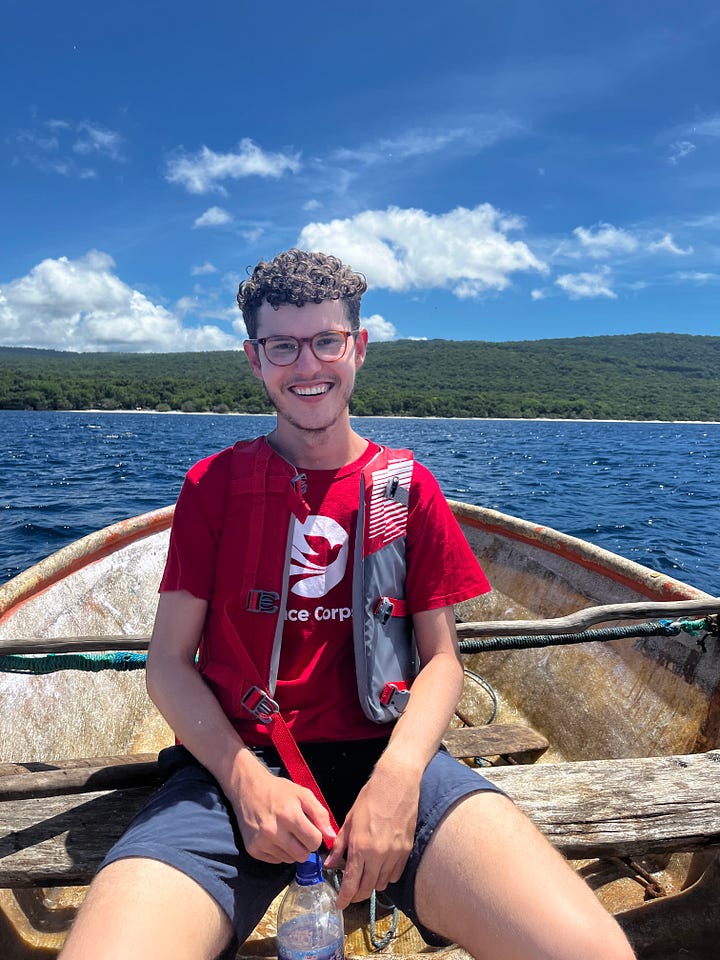
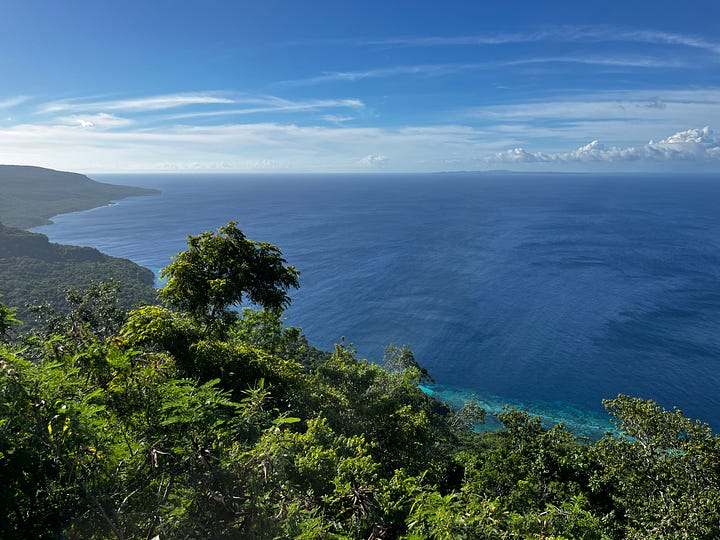
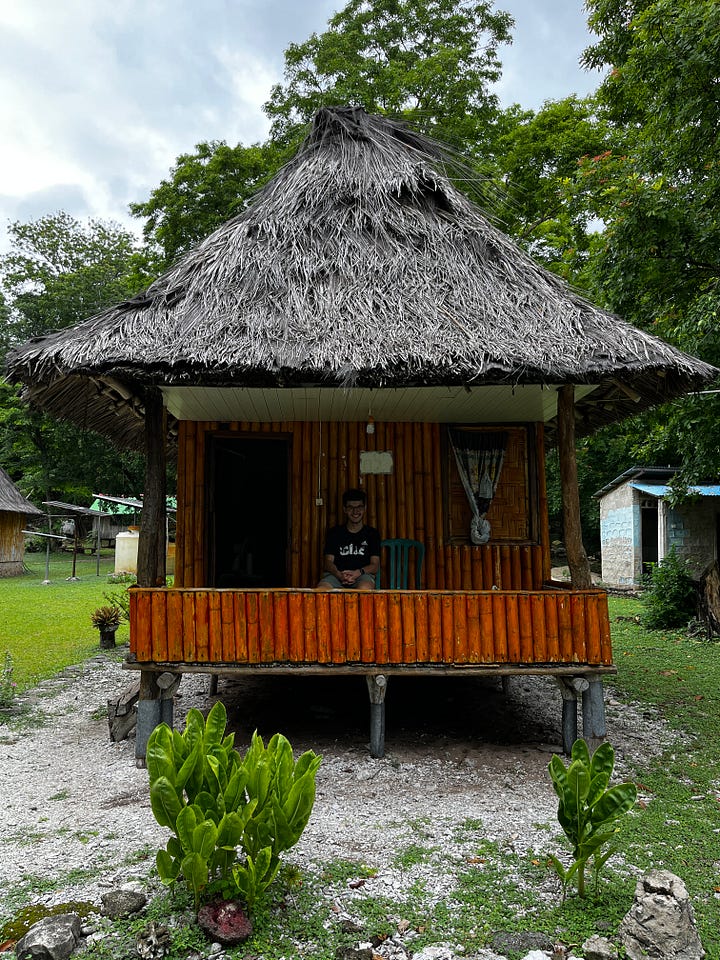
Yet another training in Dili
In mid-May, I traveled to Dili with my counterpart Candida (pictured above) to participate in Peace Corps Project Design and Management Conference. This event’s focus was equipping us volunteers and our Timorese counterparts with the tools needed to apply for grants and support while also providing a vital opportunity to brainstorm and refine project plans. Although much of my role as an education volunteer is in the classroom, it’s common for volunteers to take on a secondary project which often takes external funding. As with everything Peace Corps volunteers do, the goal is sustainability and capacity building to ensure that projects have longevity and greater impact.
Candida and I spent our time at the conference working out the details of our proposed project: creating a computer lab-esque space at our school. In March, my school received 10 computers from the Ministry of Education intended to be used by the students (which came as a complete surprise to everyone). This was a monumental step because it is the first time in the school’s history that students have had access to computers despite the mandatory Technology & Multimedia class that all high school students have to take in Timor-Leste. Up to this point, students have been forced to learn only the theory of this subject and were unable to practice. For the majority of them, they had never used a computer aside from a smart phone. When the computers first arrived, we were unable to implement them immediately due to a couple of challenges. We had no empty room that could accommodate the new equipment and even if we did, only one of the classrooms at my school has an electrical outlet. By May, the teachers had moved out of what was previously our office into a small building where the preexisting walls were removed and the students began to interact with the computers for the first time.
Although 10 computers is an incredible resource to have, it still introduces logistical challenges. With each class at my school having 40 to 50 students, groups of four to five students are having to share one computer. The two Technology teachers have created schedules that allow each student to use an individual computer, but only for 15-20 minutes at a time. The Technology & Multimedia material is only taught once a week for 45 minutes, meaning that students are only able to practice using the computers once every two weeks. My and Candida’s proposal will include requests for funds to flesh out this space with more computers, a projector, and other tools to make it a computer lab that can utilized not only during Technology & Multimedia class but also outside of it. The plan is still in its infancy but I’ll provide updates as the process moves forward.
Here is a video of my counterpart Candida and I discussing our plan in Tetun.

Independence Day
On May 20th, 2002, Timor-Leste’s independence was recognized by the international community after 400 years of Portuguese colonization, 24 years of Indonesian occupation, and three years of UN administration. 22 years later in Venilale, celebrations were underway to commemorate “Restoration of Independence Day”. Timor-Leste has three national holidays throughout the year which celebrate various points in their struggle for independence: November 28 celebrates Proclamation of Independence Day, commemorating the day on which Timor-Leste first declared itself independent from Portugal in 1975, only to be invaded by Indonesia just over a week later. May 20 is the second, and third day, on August 30, is known as the Day of Popular Consultation and commemorates the day of the 1999 referendum which led to independence from Indonesia.
As my school was in-charge of the all-important raising and lowering of the national flag, I suddenly found myself as one of three teachers responsible for overseeing the training of our marching team who would carry out said raising and lowering (when I say marching, picture a more military style rather than that of a typical marching band in the U.S.).
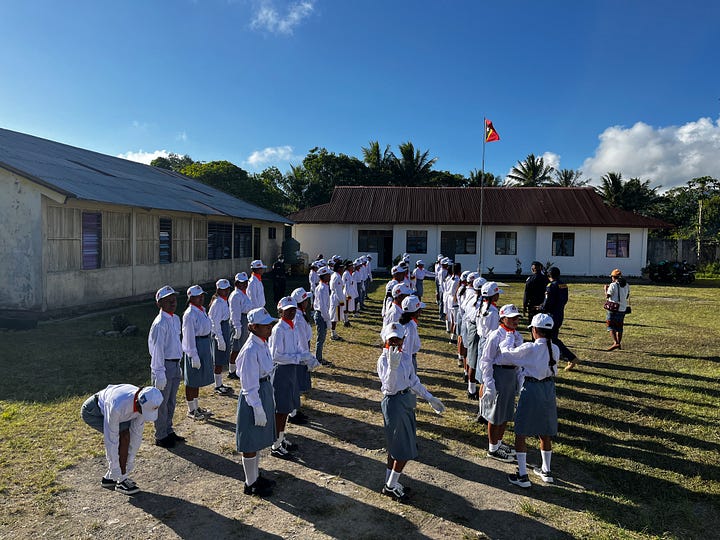
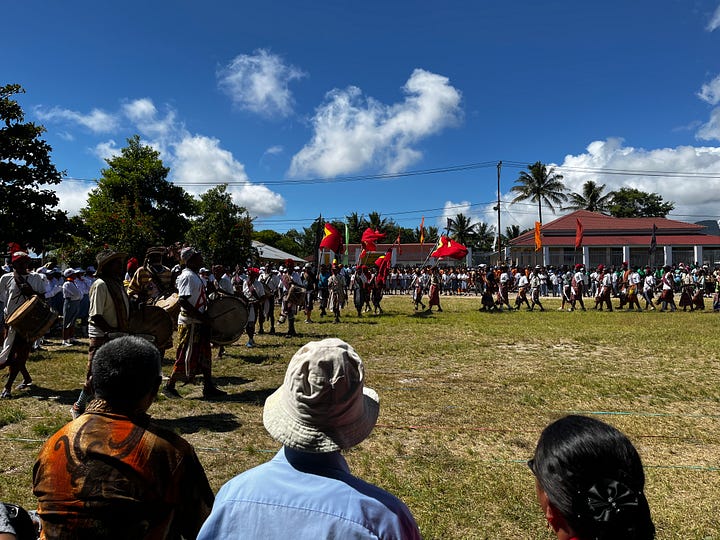
The seasons are changing here in Timor-Leste. Rainy season is coming to an end and dry season is in full force (I say this despite what some may call a torrential downpour last night). For most people in Venilale, this means it’s time to harvest the rice they planted earlier in the year. As you can see in the photo below Venilale’s terraced rice paddies have begun to turn from a verdant green to yellow — an indication that the harvest is near. Just as with the corn harvest each year, Timorese celebrate the first rice harvest with a cultural ceremony called sau hare. Before this ceremony is carried out, the new season rice may not be eaten yet.
The changing of seasons here may not mean the same drastic fluctuation in temperature and humidity that I’m used to in Milwaukee, but it is incredibly significant, especially for agriculture. Dry season (Tetun: bailoron) also means water is much more difficult to come by for daily necessities like showering, cooking, drinking, etc. Many families, including mine, must resort to buying tanks of water during this season.
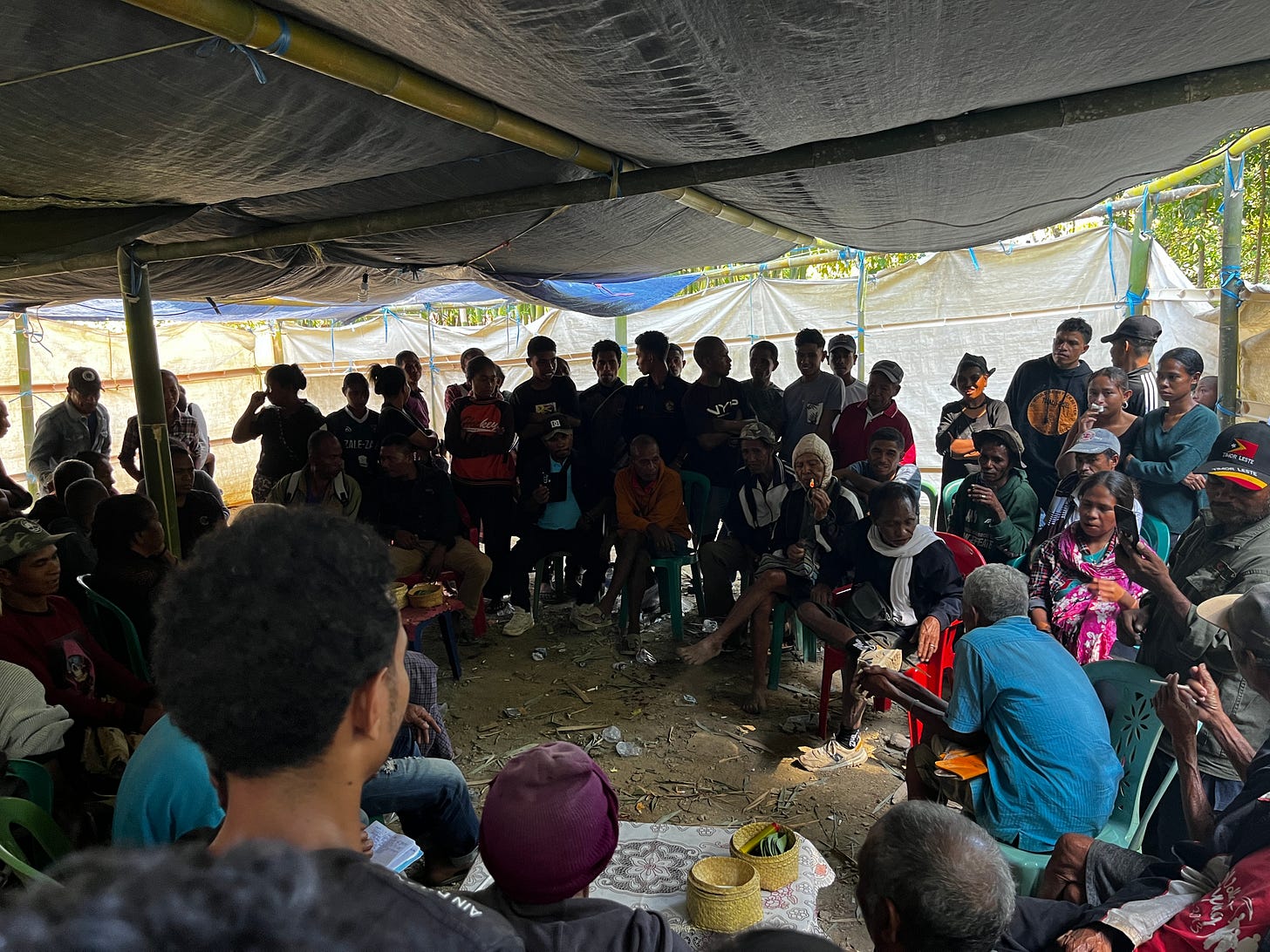
I hope to start writing these posts with more frequency once again. As always I appreciate those of you who made it this far.
Obrigadu wa’in,
Andy
Disclaimer: The views expressed in this newsletter are my own and in no way represent the views of the Peace Corps nor the U.S. Government.





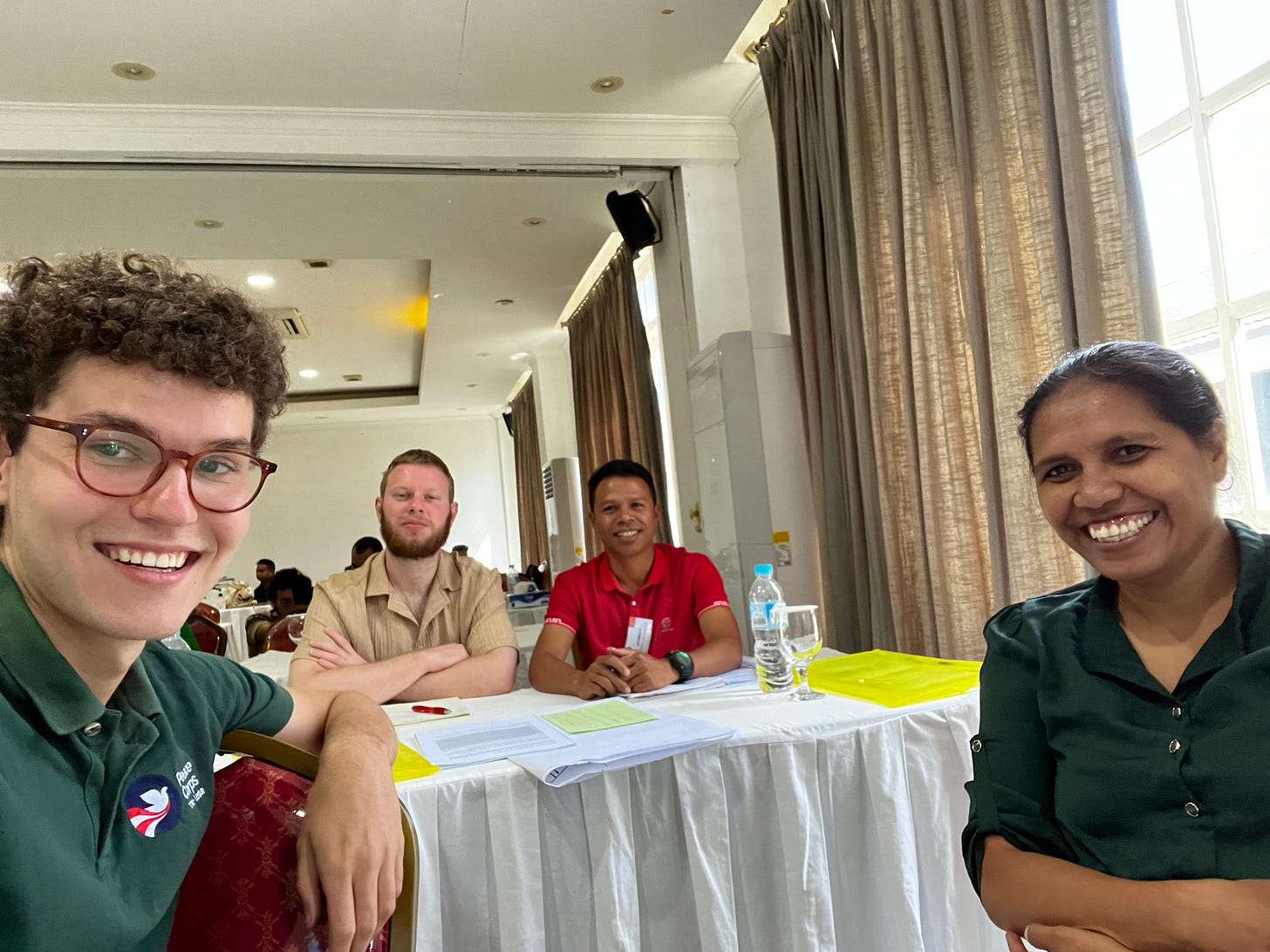
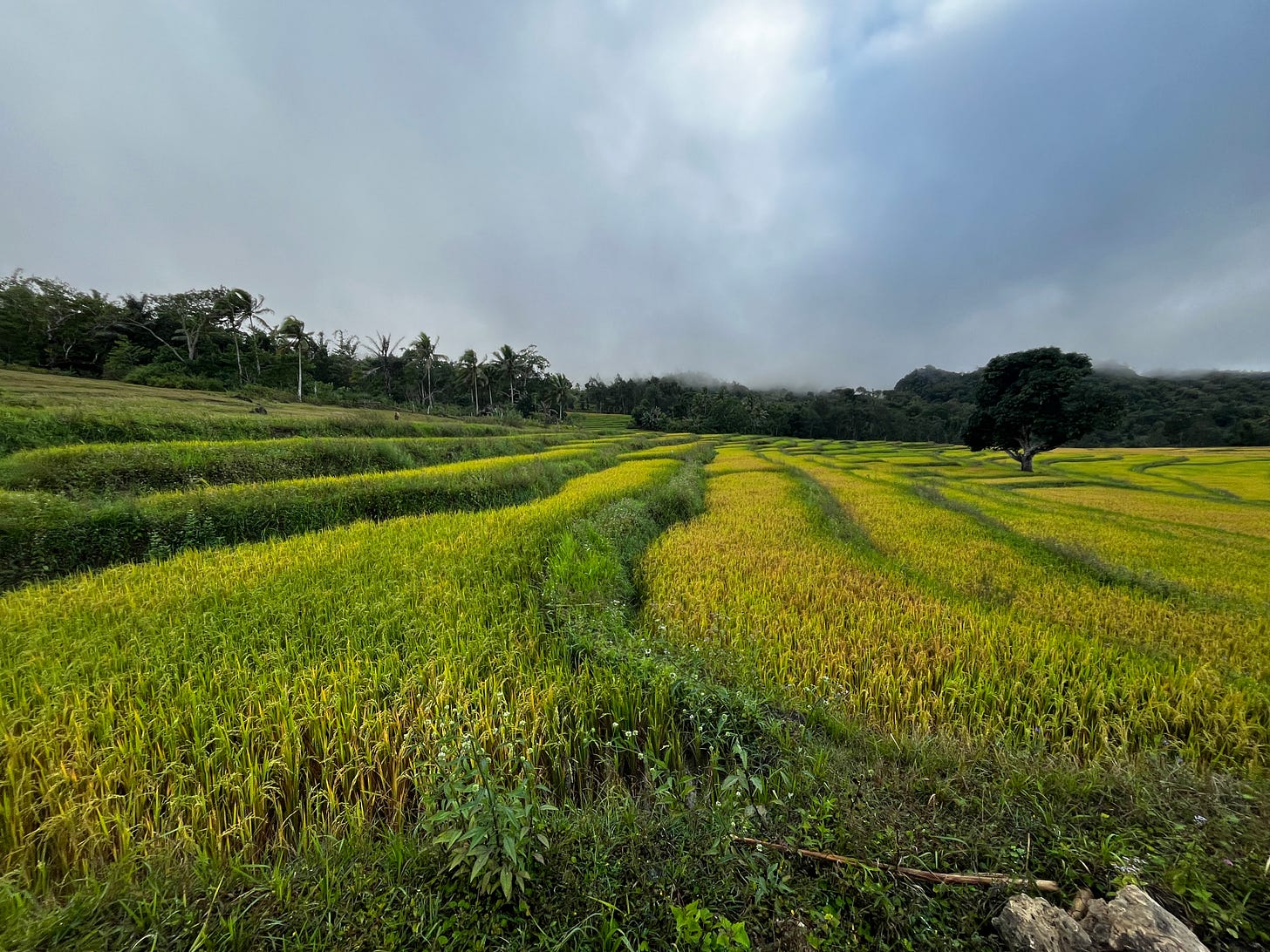
I was sure someone would inquire further about the sword…